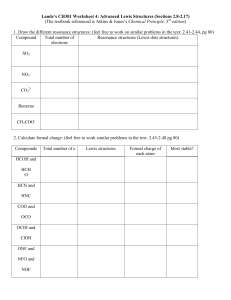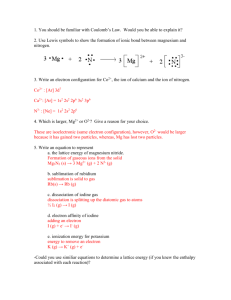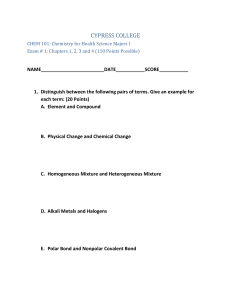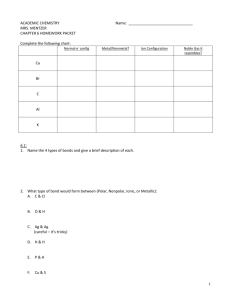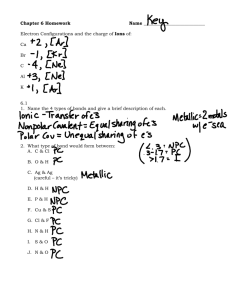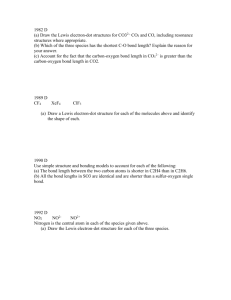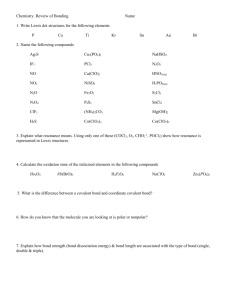File
advertisement
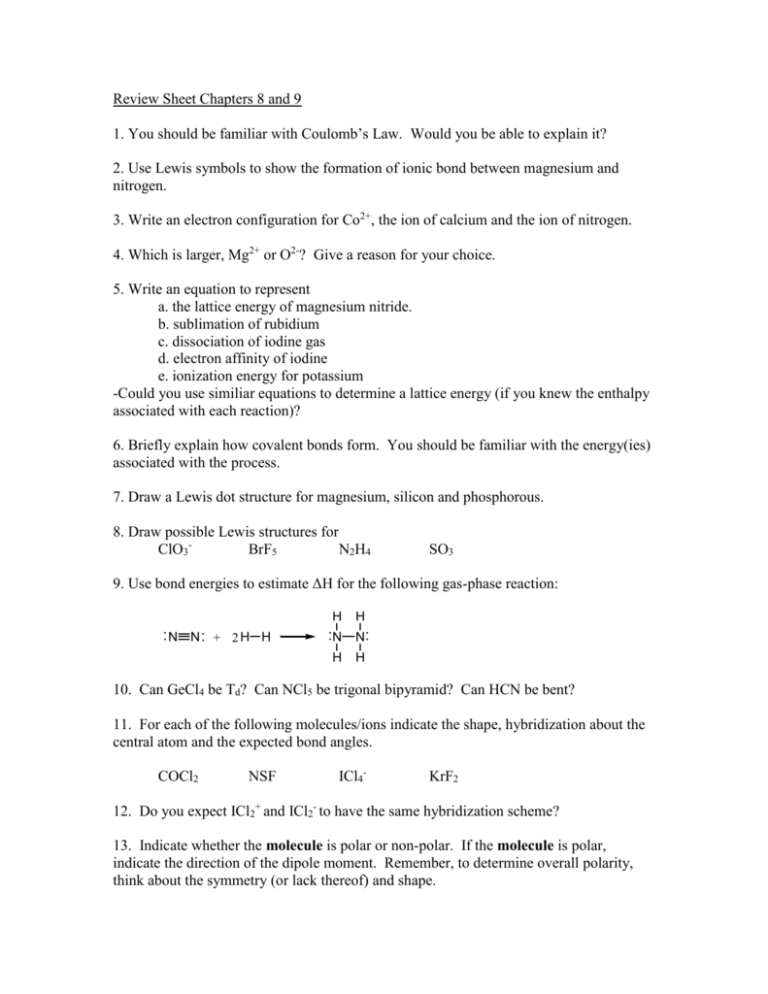
Review Sheet Chapters 8 and 9 1. You should be familiar with Coulomb’s Law. Would you be able to explain it? 2. Use Lewis symbols to show the formation of ionic bond between magnesium and nitrogen. 3. Write an electron configuration for Co2+, the ion of calcium and the ion of nitrogen. 4. Which is larger, Mg2+ or O2-? Give a reason for your choice. 5. Write an equation to represent a. the lattice energy of magnesium nitride. b. sublimation of rubidium c. dissociation of iodine gas d. electron affinity of iodine e. ionization energy for potassium -Could you use similiar equations to determine a lattice energy (if you knew the enthalpy associated with each reaction)? 6. Briefly explain how covalent bonds form. You should be familiar with the energy(ies) associated with the process. 7. Draw a Lewis dot structure for magnesium, silicon and phosphorous. 8. Draw possible Lewis structures for ClO3BrF5 N2H4 SO3 9. Use bond energies to estimate ΔH for the following gas-phase reaction: N N + 2H H H H N N H H 10. Can GeCl4 be Td? Can NCl5 be trigonal bipyramid? Can HCN be bent? 11. For each of the following molecules/ions indicate the shape, hybridization about the central atom and the expected bond angles. COCl2 NSF ICl4- KrF2 12. Do you expect ICl2+ and ICl2- to have the same hybridization scheme? 13. Indicate whether the molecule is polar or non-polar. If the molecule is polar, indicate the direction of the dipole moment. Remember, to determine overall polarity, think about the symmetry (or lack thereof) and shape. C2H4 COCl2 HCN SF6 NO2
